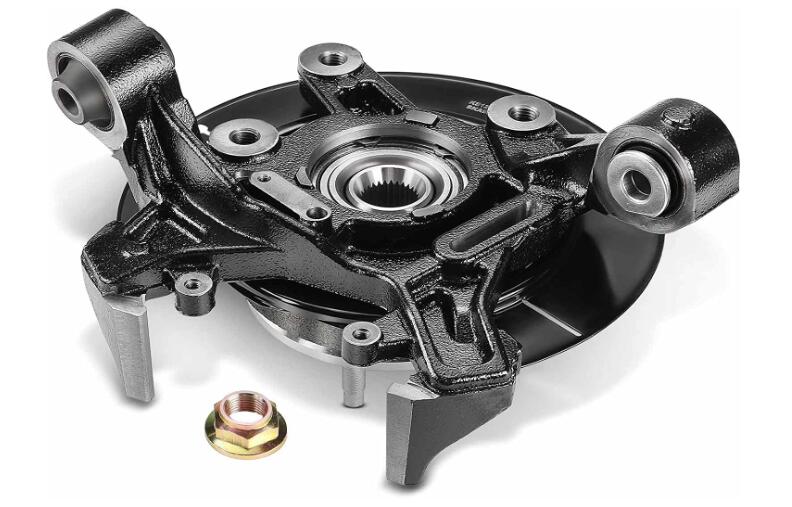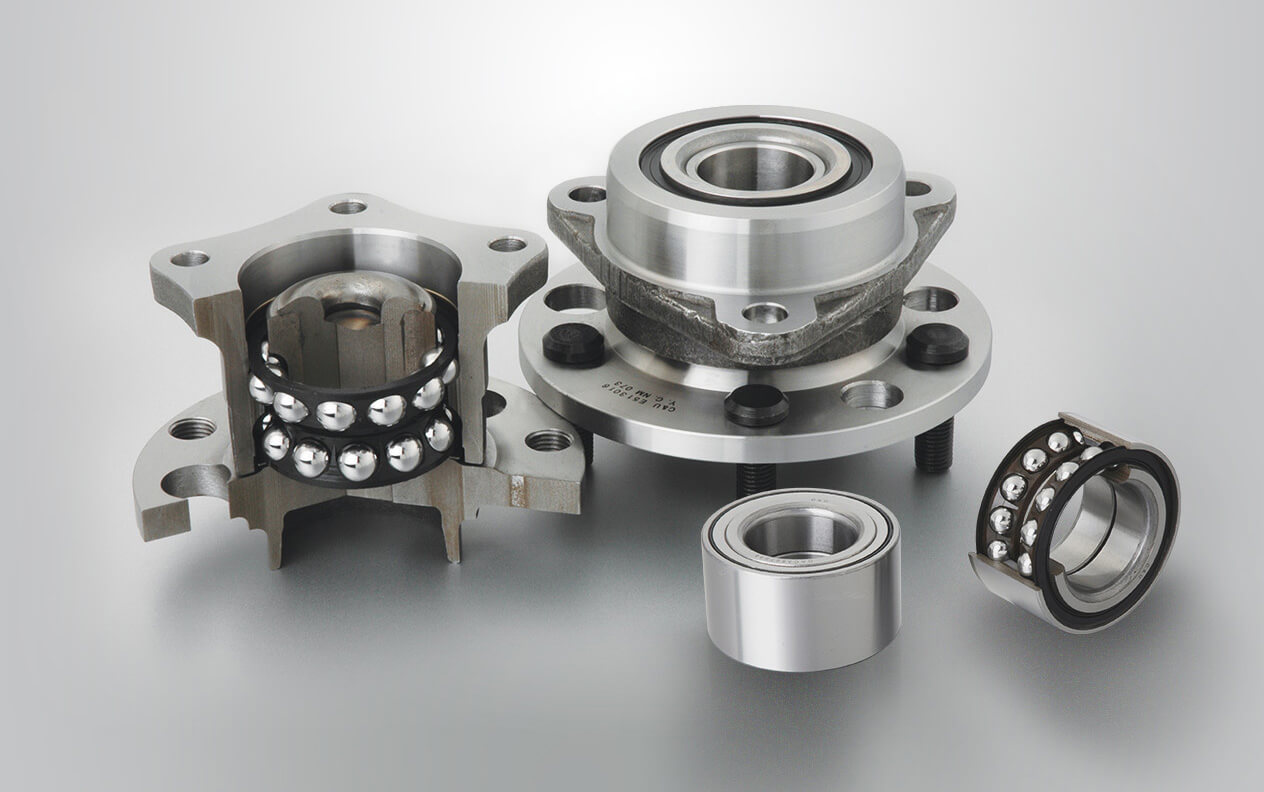Introduction
In the continuously advancing automotive industry, vehicle components’ safety is paramount.
As vehicles become more advanced, so are the standards that ensure their safety.
One such essential component recently seen notable innovations is the wheel bearing and hub assembly.
The evolution in its design underscores a commitment to safety, all while keeping pace with technological advancements.
1. A Glimpse Into Wheel Bearing and Hub Assembly
Defining the Component: The wheel bearing and hub assembly is a foundational part of a vehicle, ensuring the smooth rotation of wheels.
These assemblies support the car’s weight and reduce friction as the wheels rotate.
Why It’s Crucial: Beyond facilitating smooth wheel rotations, they play a pivotal role in vehicle safety.
A compromised bearing or hub can lead to decreased handling capability or, in extreme cases, a wheel detachment. Hence, ensuring their optimal functionality is crucial.
2. The Evolution of Safety Standards Over Time
Historical Perspective: In the early days of the automotive industry, wheel bearings were more straightforward and required frequent maintenance.
As vehicles became faster and more advanced, so did the need for more robust and long-lasting wheel-bearing designs.
Modern Advancements: With the integration of advanced materials and manufacturing techniques, today’s wheel bearings and hub assemblies are designed for longevity.
They’re also engineered to endure a broader range of operational conditions, from high-speed freeway driving to off-road challenges.
3. The Integration of Technology in Design and Testing
Computer-Aided Design (CAD): CAD tools allow engineers to simulate and test the performance of wheel bearings under various conditions.
This speeds up the design phase and ensures the final product meets rigorous safety standards.
Advanced Testing Protocols: Modern wheel bearing assemblies undergo tests, from high-stress scenarios to long-duration reliability assessments.
These stringent testing protocols symbolize the industry’s unwavering commitment to safety.
Data Analytics: Leveraging vast amounts of testing data, engineers can predict potential points of failure and refine designs, ensuring that modern wheel bearings are efficient and surpass safety standards.
4. Marketing the Safety Element in Production
Consumer Awareness: As consumers become more informed, there’s a demand for transparency about product safety.
Marketers focus on campaigns highlighting the rigorous testing and high safety standards of their wheel bearing and hub assemblies.
B2B Relations: For businesses operating in the B2B sector, emphasizing safety in production can be a significant differentiator.
Manufacturers can foster deeper trust and partnerships with automotive producers by showcasing the technological and testing advancements they employ.
5. The Role of Regulatory Bodies and Certifications
Global Standards: Bodies such as ISO and SAE International have set global standards for wheel bearings, ensuring consistency in safety across products, regardless of their origin.
Certifications as a Marketing Tool: Manufacturers that meet or exceed these global standards are often awarded certifications.
Prominently displayed certificates testify to the product’s safety and reliability, influencing both B2B and direct consumers.
6. Future Trajectories: Electric Vehicles and New Challenges
Emergence of EVs: The rise of electric vehicles presents new challenges. EVs often have different weight distributions and may produce stress on wheel bearings.
Innovative Solutions: As the automotive industry leans more towards electrification, wheel bearing designs are evolving to cater to these specific needs, ensuring that safety remains at the forefront.
7. Enhanced Materials for Improved Safety
The Shift to Stronger Alloys: As vehicles continue to diversify in design and function, there’s a pressing need for materials that can endure higher stresses.
Advanced alloys, combining metals like chromium, molybdenum, and nickel, are now being utilized to create wheel bearings that can take more significant pressures while enhancing corrosion resistance.
Nanotechnology in Material Enhancement: Cutting-edge research is delving into nanotechnology to refine wheel-bearing materials at the atomic and molecular levels.
Researchers aim to develop unparalleled strength and durability wheel bearings by manipulating structures on minuscule scales.
8. Sustainable Production and the Safety Synergy
Eco-friendly Production Techniques: With global emphasis on sustainable production, manufacturers are exploring methods to produce wheel-bearing assemblies with a smaller carbon footprint.
Surprisingly, many green techniques, such as cold forging, reduce environmental impact and enhance the component’s strength and safety.
Recycling and Upcycling: The push for sustainability has also ushered in innovative methods to recycle old wheel bearings, upcycling them into newer products or safely reincorporating them into production cycles.
This holistic approach ensures minimal waste, proving that safety and sustainability coexist.
9. Digital Transformation and Its Impact on Safety Protocols
IoT and Real-time Monitoring: Integrating the Internet of Things (IoT) into the manufacturing process allows for real-time monitoring of wheel bearing production.
Tracking the assembly’s status in real-time can detect anomalies instantly, ensuring that only the safest products make it through the production line.
Machine Learning for Quality Control: Leveraging machine learning algorithms, manufacturers can predict potential defects in the production line even before they occur.
These predictive models, trained on vast amounts of data, ensure a consistency in safety that was previously hard to achieve.
10. Collaborative Efforts and Industry Consortiums
Unified Safety Goals: Collaboration often trumps competition in an industry as crucial as automotive manufacturing.
Leading manufacturers are forming consortiums to set collective safety standards and share best practices.
Open Source Knowledge Sharing: Recognizing the universal importance of safety, many entities opt for open-source platforms to share research, insights, and technological advancements related to wheel bearing and hub assembly safety.
Such collective wisdom accelerates innovation and ensures that safety standards rise industry-wide.
Conclusion
Safety, in the context of wheel bearing and hub assembly design, is an ever-evolving paradigm. It’s a tapestry woven from threads of technological advancements, rigorous testing, stringent standards, and an undying commitment to excellence.
As vehicles become more advanced and consumer demands shift, the industry’s focus on safety still needs to be more robust.
Through collaborative efforts, sustainable practices, and a keen eye on future challenges, manufacturers ensure that every journey on the road is smooth and exceptionally safe.




